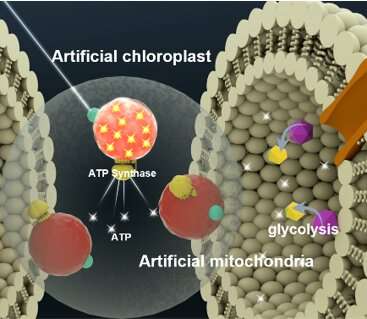Phys.org March 28, 2023
Sustainable energy conversion modules are the main challenges for building complex reaction cascades in artificial cells. Recent advances in biotechnology have enabled this sustainable energy supply, especially the adenosine triphosphate (ATP), by mimicking the organelles, which are the core structures for energy conversion in living cells. Three components are mainly shared by the artificial organelles: the membrane compartment separating the inner and outer parts, membrane proteins for proton translocation, and the molecular rotary machine for ATP synthesis. Depending on the initiation factors, they are further categorized into artificial mitochondrion and artificial chloroplasts, which use chemical nutrients for oxidative phosphorylation and light for photosynthesis, respectively. In a review article an international team of researchers (South Korea, China) summarizes the essential components needed for artificial organelles and review the recent progress on two different artificial organelles. They discuss recent strategies, purified and identified proteins, and working principles. According to the researchers with more study on the artificial mitochondrion and artificial chloroplasts, they are expected to be very powerful tools, for achieving complex cascading reactions in artificial cells, like the ones that happen in real cells… read more. Open Access TECHNICAL ARTICLE

Concept of artificial chloroplasts and mitochondria within a liposome for self-sustaining energy generation… Credit: Biological Interface Group, Sogang University.